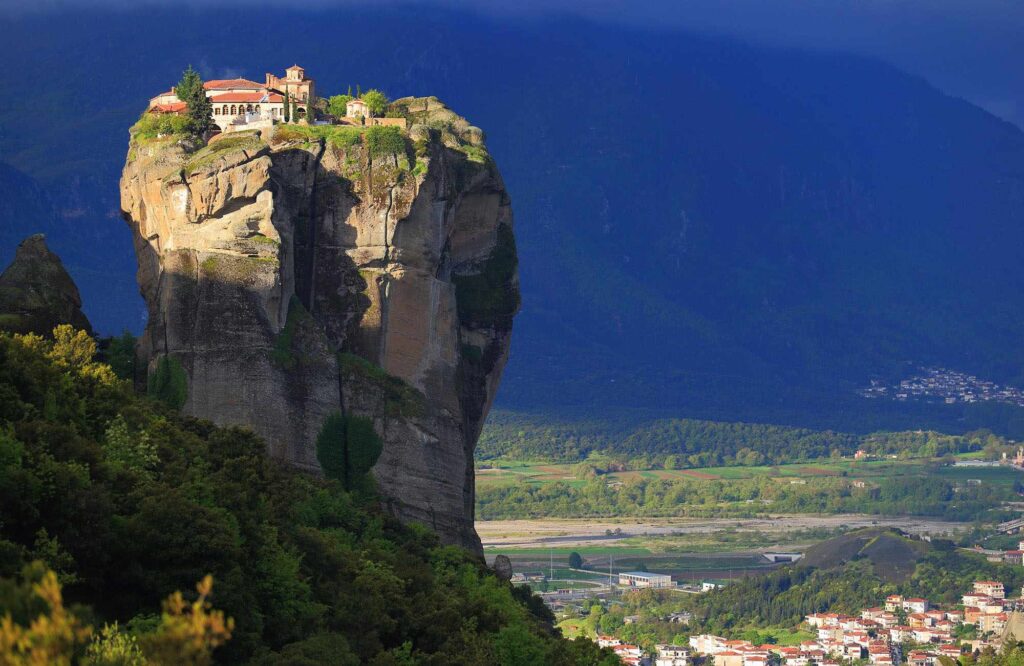Meteora, Greece – Travel Tips
Category
Categories
Popular Articles

**Overview of the Destination:**
Meteora, a UNESCO World Heritage site in central Greece, is a miraculous formation of gigantic rocks with monasteries perched atop like birds preparing to take flight. Famous for its six active monasteries, Meteora embodies both natural beauty and historical significance, making it a must-visit for history enthusiasts, outdoor-lovers, photographers, and peace seekers.
**Best Time to Visit:**
The best time to visit Meteora is during Spring (April to June) and Fall (September to November), when the weather is pleasant, and the crowded summer tourist season has subsided. The Orthodox Holy Week, usually in April, sets the stage for very scenic religious ceremonies in Meteora. Plan ahead as many sites may have altered schedules at this time.
**Climate & What to Pack:**
Meteora experiences a Mediterranean climate with hot summers and mild winters. Summer temperatures can rise to 30°C, while winter usually hovers around 10°C. Pack breathable clothing for the summer, including good walking shoes, sunblock, a hat, and sunglasses. In winters, layer up with clothing and don’t forget a raincoat or umbrella for the odd showers.
**Getting There:**
The nearest major airport to Meteora is Thessaloniki Airport, about 2.5 hours away by bus. From the airport, you can take a bus or taxi to Trikala, and then onwards to Kalambaka, the gateway town to Meteora. Greece is part of the Schengen Area, so ensure you have the necessary visas or permits.
**Getting Around Locally:**
Kalambaka is a small town that’s easy to explore on foot. To reach the monasteries at Meteora, consider the local bus service, or hire a taxi. Alternatively, rent a car or a scooter if you prefer flexibility. Local tour operators also offer guided tours that shuttle you between the monasteries.
**Safety Tips:**
Meteora is generally very safe for tourists. Respect sacred spaces and adhere to the dress code in monasteries (no shorts or sleeveless tops). Solo travelers, including women, shouldn’t face any issues. However, like in any tourist area, be aware of your surroundings and keep your valuables secure.
**Top Things to Do & See:**
The six monasteries are top attractions, each offering a unique glimpse into religious life. Additionally, hiking the numerous trails, rock climbing, and witnessing the breathtaking sunsets are unique experiences in Meteora. Don’t miss the local museum to dive into the history and culture of the area.
**Where to Stay:**
Kalambaka offers a range of accommodations. For luxury, check out the Meteora Hotel at Kastraki. For mid-budget options, Toti Boutique Rooms or the Monastiri Guesthouse are great. Budget travelers can try Meteora Central Hostel or Hotel Kosta Famissi.
**Food & Local Cuisine:**
Mediterranean cuisine reigns supreme in Meteora. Try local dishes like Dolmades, Moussaka, or Souvlaki at traditional tavernas. If you seek comfort, international fare is available too.
**Cultural & Practical Tips:**
The official currency is the Euro, and English is widely spoken. Tipping is customary in Greece; 10% is sufficient in restaurants. Power plugs are type F, voltage is 230 V, and frequency is 50 Hz. Free Wi-Fi can often be found at hotels and cafés.
**Sustainable or Responsible Travel Tips:**
Respect sacred, historical sites and always adhere to signposted guidelines. Try to support local businesses by buying local foods and goods. When hiking, stay on marked trails to protect the flora.
**Personal Travel Tip:**
Meteora is as much about spirituality as it is about stunning natural beauty. Whenever possible, try to pause, soak in the surroundings and embrace the tranquility. It isn’t all about checking each monastery off your list–savor your time in this unique placid environment. Remember, you’re traveling not only to see, but also to feel. Let the charm of Meteora touch your soul. Happy traveling!










